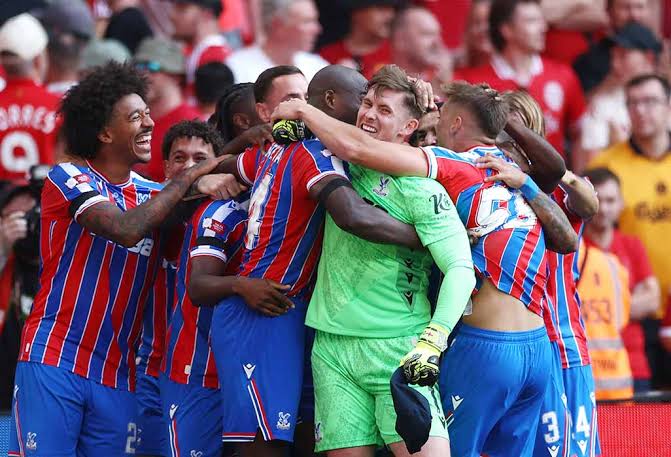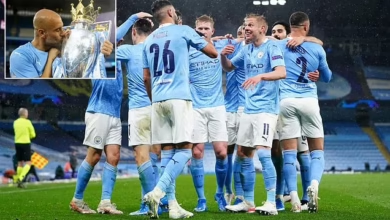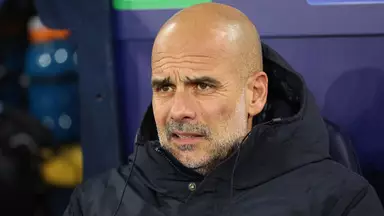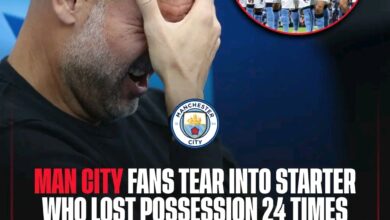Crystal Palace’s Historic Community Shield Victory: A Comprehensive Analysis

The 2025 FA Community Shield delivered one of the most memorable matches in the competition’s storied history, as Crystal Palace achieved their maiden triumph in the traditional season curtain-raiser. In a thrilling encounter at Wembley Stadium that showcased the best of English football, Palace overcame reigning Premier League champions Liverpool in a dramatic penalty shootout, marking a historic moment for the South London club and their passionate supporters.
This victory represents far more than just a trophy for Crystal Palace – it signifies the culmination of years of steady progress under careful management and strategic investment. For a club that has often found itself battling relegation in recent seasons, winning the Community Shield against one of Europe’s elite represents a seismic shift in expectations and ambitions.
The opening period of this Community Shield clash was nothing short of spectacular, featuring four goals and enough talking points to fill an entire season. Liverpool, under new management with Arne Slot having replaced Jürgen Klopp, made an emphatic start that suggested they would cruise to victory.
Hugo Ekitike, Liverpool’s marquee summer signing, announced his arrival in English football with the perfect debut goal. Just four minutes into the match, the French striker demonstrated why Liverpool had fought off competition from across Europe to secure his signature. The goal came from a moment of genuine quality, with fellow new recruit Florian Wirtz providing an assist that highlighted the creative talent the German midfielder brings to Slot’s tactical setup.
Ekitike’s early strike seemed to set the tone for what many expected would be a routine Liverpool victory. The Reds’ summer transfer business had been widely praised, with the additions of Ekitike and Wirtz addressing key areas of the squad that had been identified for improvement. The early goal vindicated the club’s recruitment strategy and gave Slot the perfect start to his tenure as Liverpool manager.
However, Crystal Palace’s response demonstrated the character and resilience that has become their trademark under current management. Rather than allowing the early setback to derail their gameplan, Palace regrouped and began to implement their own tactical approach with increasing effectiveness.
The turning point came when Virgil van Dijk, typically so reliable in defensive situations, committed a clumsy foul on Ismaila Sarr inside the penalty area. The Dutch defender, usually the epitome of composed defending, seemed caught off guard by Sarr’s pace and directness. The penalty decision was clear-cut, giving Palace the opportunity to level the scores from twelve yards.
Jean-Philippe Mateta stepped up to take the penalty with the confidence of a striker in excellent form. The French forward, who has become increasingly important to Palace’s attacking play, sent Alisson Becker the wrong way with a precisely placed spot-kick that nestled into the bottom corner. Mateta’s penalty technique was exemplary – calm, composed, and clinical under the intense pressure of a Wembley penalty.
The equalizer seemed to energize Palace and their travelling supporters, who had made the journey to Wembley in huge numbers. The atmosphere inside the stadium shifted perceptibly, with the Palace fans finding their voice and creating the kind of noise that has become synonymous with their passionate support.
Liverpool’s response to the equalizer was immediate and effective. Jeremie Frimpong, another of the club’s summer signings, restored their lead with what could generously be described as a freakish goal. The Dutch defender’s cross from the right flank was intended to find a teammate in the penalty area, but the ball’s trajectory and spin took it beyond everyone, including Palace goalkeeper Dean Henderson, before nestling in the far corner of the net.
Frimpong’s goal was the kind of fortunate strike that can often decide major matches. While the defender will claim he meant it, the reality is that sometimes football produces moments of pure chance that can alter the course of a game entirely. For Liverpool, it mattered little how the goal came about – they had restored their advantage at a crucial moment.
The first half concluded with Liverpool holding a 2-1 lead, but the scoreline failed to tell the complete story of an enthralling forty-five minutes. Both teams had shown attacking intent, defensive vulnerability, and the kind of quality that suggested the second half would provide equally compelling viewing.
The second period of the match proved to be a completely different affair from the goal-laden first half. Where the opening forty-five minutes had been characterized by end-to-end action and defensive lapses, the second half became a more tactical battle, with both managers making adjustments to their systems and personnel.
Crystal Palace emerged from the interval with renewed determination and a clearer tactical structure. Their manager had evidently addressed some of the defensive issues that had allowed Liverpool to take the lead twice in the first half, while also encouraging greater attacking ambition from his players.
The key to Palace’s second-half improvement lay in their ability to control the midfield battle more effectively. Adam Wharton, the young midfielder who has become increasingly important to Palace’s style of play, began to assert greater influence on the game’s tempo and direction. Wharton’s passing range and vision would prove crucial to Palace’s eventual equalizer.
Liverpool, perhaps mindful of their one-goal advantage and the importance of avoiding another Community Shield defeat, adopted a slightly more conservative approach in the second half. While they continued to pose an attacking threat, there was less of the high-intensity pressing that had characterized their first-half performance.
The decisive moment of the second half came through a moment of individual brilliance from Ismaila Sarr. The Senegalese winger, who had already won a penalty in the first half, demonstrated his pace and finishing ability to bring Palace level for the second time in the match.
The goal originated from Adam Wharton’s exceptional passing ability. The midfielder, displaying vision beyond his years, spotted Sarr’s run into the penalty area and delivered a perfectly weighted through ball that split Liverpool’s defensive line. Wharton’s pass was the kind of assist that separates good players from great ones – executed with precise timing and weight that gave Sarr the best possible opportunity to score.
Sarr’s finish was equally impressive. Racing onto Wharton’s pass, the winger demonstrated composure under pressure to slot the ball past Alisson and send the Palace supporters into raptures. The goal was reward for Sarr’s persistent threat throughout the match and highlighted why he has become such an important player for Palace.
The equalizer transformed the atmosphere inside Wembley once again. Palace supporters, who had been relatively quiet during Liverpool’s period of dominance, erupted in celebration, while their team seemed to grow in confidence with each passing minute.
With the match level at 2-2 after ninety minutes of compelling football, the Community Shield would be decided by a penalty shootout – a scenario that often favors the underdog due to its inherent unpredictability.
Dean Henderson, the Palace goalkeeper who had endured a difficult first half, emerged as the hero of the penalty shootout. Henderson’s saves during the shootout demonstrated the kind of shot-stopping ability that had originally earned him recognition as one of England’s most promising goalkeepers.
The penalty shootout itself was a nerve-wracking affair, with both teams demonstrating varying levels of composure from twelve yards. While the specific details of each penalty are etched in the memories of those who witnessed them, the overall narrative was one of Palace gradually gaining the psychological advantage.
Henderson’s crucial saves gave Palace the platform they needed to claim victory, but it was Justin Devenny who ultimately secured the historic triumph. The young midfielder, stepping up to take what proved to be the winning penalty, demonstrated remarkable composure for a player of his experience level.
Devenny’s winning penalty was struck with confidence and precision, finding the corner of the net and sparking scenes of jubilation among the Palace supporters. For a player who has emerged from the club’s academy system, scoring the winning penalty in a Community Shield triumph represents the fulfillment of childhood dreams.
The Community Shield defeat represented a learning experience for Liverpool under their new manager, Arne Slot. The Dutch coach, who replaced the legendary Jürgen Klopp, had been tasked with maintaining Liverpool’s competitiveness while potentially implementing his own tactical philosophy.
Slot’s team selection and tactical approach for the Community Shield provided interesting insights into his thinking. The inclusion of new signings Ekitike, Wirtz, and Frimpong suggested a willingness to integrate new players quickly, while his tactical setup demonstrated both similarities and differences to the Klopp era.
The performance of Liverpool’s new signings was generally positive despite the defeat. Ekitike’s early goal announced his arrival in English football in emphatic fashion, while Wirtz showed glimpses of the creative ability that made him one of Europe’s most sought-after midfielders. Frimpong’s fortunate goal aside, the defender demonstrated the attacking threat from fullback positions that Slot clearly values in his system.
However, the defensive lapses that allowed Palace to equalize twice will concern Slot as he prepares his team for the Premier League season. The penalty conceded by van Dijk was uncharacteristic of the Dutch defender, while the general defensive structure seemed less solid than Liverpool supporters have become accustomed to under previous management.
For Slot, the Community Shield represented both encouragement and warning. The attacking play showed promise, particularly in the first half, but the defensive frailties and inability to close out the game will require attention before the competitive season begins in earnest.
Crystal Palace’s Community Shield victory represents the greatest achievement in the club’s recent history and potentially sets the tone for a transformative period. For a club that has often found itself fighting relegation battles, winning a major trophy against one of England’s most successful teams represents a significant psychological breakthrough.
The victory validates the strategic approach taken by Palace’s management and ownership in recent seasons. Rather than pursuing expensive quick fixes, the club has focused on developing young talent, making shrewd signings, and building a sustainable foundation for long-term success.
Players like Adam Wharton and Ismaila Sarr epitomize Palace’s recruitment strategy – talented individuals who can develop within the club’s system while contributing immediately to first-team success. Wharton’s performance, in particular, demonstrated why he is regarded as one of the most promising young midfielders in English football.
The penalty shootout victory also highlighted Palace’s mental strength and resilience. Coming back from behind twice against Liverpool required significant character, while holding their nerve in the penalty shootout demonstrated a maturity that augurs well for future high-pressure situations.
For Palace supporters, many of whom have endured decades of disappointment and near-misses, the Community Shield victory provides validation of their unwavering loyalty. The scenes of celebration at Wembley and throughout South London reflected the genuine joy felt by a fanbase that has rarely had the opportunity to celebrate major trophy success.
Arne Slot’s tactical approach for the Community Shield provided fascinating insights into his plans for Liverpool. The Dutch manager appeared to favor a more controlled possession-based style compared to Klopp’s high-intensity gegenpressing, though elements of Liverpool’s traditional pressing game remained evident.
The positioning of new signing Florian Wirtz was particularly interesting, with the German midfielder operating in a more advanced role that allowed him to link play between Liverpool’s midfield and attack. Wirtz’s assist for Ekitike’s opening goal demonstrated the kind of creative passing that Liverpool has sometimes lacked in recent seasons.
Hugo Ekitike’s role as the central striker showed promise, with the Frenchman demonstrating good movement and clinical finishing. His partnership with Liverpool’s existing attacking players suggested positive developments in the club’s offensive capabilities. However, Liverpool’s defensive organization appeared less solid than in previous seasons. The penalty conceded and general defensive structure suggested that Slot’s system may require more time to bed in properly.
Palace’s approach to the match demonstrated tactical flexibility and resilience that reflects well on their coaching staff. The team’s ability to recover from setbacks twice in the match showed mental strength that extends beyond pure tactical considerations.
Adam Wharton’s performance in central midfield was particularly impressive, with the young player demonstrating passing range and vision that belied his relative inexperience at this level. His assist for Sarr’s equalizer was the highlight of an accomplished individual performance.
Ismaila Sarr’s pace and directness caused problems for Liverpool’s defense throughout the match, while Jean-Philippe Mateta’s penalty conversion demonstrated composure under pressure that marks him out as a reliable performer in crucial moments. Palace’s defensive resilience in the second half, particularly their ability to limit Liverpool’s attacking opportunities, showed tactical maturity that will serve them well in competitive matches.
The Community Shield has a rich history dating back to 1908, though its current format as a contest between the Premier League champions and FA Cup winners was established in 1974. Crystal Palace’s victory makes them only the latest in a long line of teams to claim this prestigious curtain-raiser to the English football season.
For Palace, this represents their first major trophy success in several decades, making it a truly historic achievement for the club and its supporters. The victory joins other memorable Community Shield upsets, where supposedly inferior teams have overcome more fancied opponents to claim silverware.
The match also highlighted the competitive nature of contemporary English football, where traditional hierarchies can be challenged by well-organized and motivated teams. Palace’s victory serves as inspiration for other clubs outside the traditional “big six” that success is achievable with the right approach and mentality
Crystal Palace’s Community Shield victory inevitably raises expectations for their upcoming Premier League campaign. While manager and players will be keen to emphasize that the trophy doesn’t guarantee future success, the confidence gained from defeating Liverpool could prove invaluable in competitive fixtures.
The performance levels displayed by key players like Wharton and Sarr suggest that Palace may be better equipped than in previous seasons to compete against top-level opposition. If they can maintain the tactical discipline and mental resilience shown in the Community Shield, a mid-table finish or better could be achievable.
For Liverpool, the defeat serves as a reminder that success cannot be taken for granted, particularly during a














